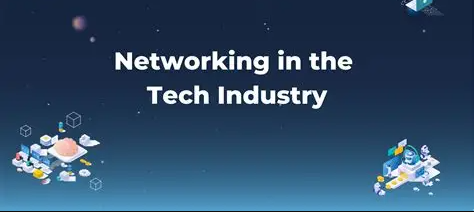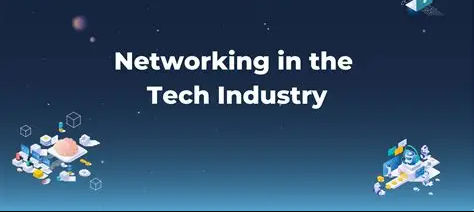In this article, I will explain How to Network in the Tech Industry. Networking is vital for development, knowledge, and teamwork in the rapidly changing technology sector.
- About Tech Industry
- How to Network in the Tech Industry
- Sample: Networking at a Technology Conference
- Step 1: Look Into the Conference
- Step 2: Prepare Your Self-Introduction
- Step 3: Attend Sessions and Engage
- Step 4: Approach Other Attendees and the Speakers
- Step 5: Contact Information Exchange
- Step 6: Contact After for the Conference
- Step 7: Preserve the Connection
- Tips for Effective Networking
- Be Genuine and Authentic
- Offer Value FIrst
- Craft an Elevator Pitch
- Listen Actively
- Use Online Platforms
- Attend Events Regularly
- Follow Up Consistently
- Join Collaborative Projects
- Track Your Connections
- Be Patient and Persistent
- Common Networking Mistakes to Avoid
- Being Too Pushy or Transactional
- Not Following Up
- Ignoring Online Networking Opportunities
- Not Preparing Your Introduction
- Not Listening
- Networking Only When You Need Something
- Spreading Yourself Too Thin
- Not Acknowledging Mutual Value
- Pros & Cons
- Conclusion
- FAQ
Using the right techniques, you can develop beneficial contacts and open doors to new possibilities, whether through the Internet, meetings, or mentoring.
About Tech Industry
The technology sector is comprised of all sectors of the economy which is dedicated to the production of technology and technology products and the provisions of technology services. These services and products include software, hardware, electronics, AI, cloud services, and services related to cybersecurity, telecommunications, and the latest innovations in technology, which includes blockchain and virtual reality.
The sector is the principal generator of innovation across all sectors, such as healthcare, finance, education, and entertainment, by providing improved efficiency, enhanced connectivity, and advanced automation.

The sector is also recognized for its rapid expansion autonomous economic growth and development. The global economy utilizes a flexible, highly skilled, highly creative, and highly adaptive workforce.
The sector includes large corporations, such as Apple, Microsoft and Google, and very small businesses. The sector defines the modern global economy and modern life by innovative high-tech services and products and provides a high degree of economic and entrepreneurial value.
How to Network in the Tech Industry

Sample: Networking at a Technology Conference
Step 1: Look Into the Conference
- Determine who the important speakers and attendees are and what the companies are about.
- Formulate some relevant questions that pertain to your interests.
Step 2: Prepare Your Self-Introduction
- Develop a 30-second pitch about your identity, your competencies, and what you are seeking.
Step 3: Attend Sessions and Engage
- Engage in the discussions and workshops you attend and participate in the Q&A sessions.
- Write down notes to help you remember and reference the important content.
Step 4: Approach Other Attendees and the Speakers
- Polite self-introduction.
- Talk about shared interests or thoughts you have and insights from the session.
Step 5: Contact Information Exchange
- Business card exchange and LinkedIn connections.
- In your connection note, include a short personalization.
Step 6: Contact After for the Conference
- Send a message thanking them, restate some of the chat topics.
- If suited, propose the idea of a meeting or collaboration.
Step 7: Preserve the Connection
- Send pertinent content, articles, and check-in, or congratulate them to show.
- Tech communities are an encouraging part and be sure to engage around the net and in person.
Tips for Effective Networking
Be Genuine and Authentic
Establish genuine relationships rather than superficial ones.
Offer Value FIrst
Provide knowledge and support, and only then ask for something in return.
Craft an Elevator Pitch
Create a brief self-introduction that covers important points about your skills and career objectives.
Listen Actively
Engage in other people’s conversations.
Use Online Platforms
Participate in LinkedIn, GitHub, and other social media and tech community sites.
Attend Events Regularly
Participate in relevant conferences, meetups, and hackathons.
Follow Up Consistently
Send thank you notes and other relevant materials and check in regularly.
Join Collaborative Projects
Volunteer to support open-source initiatives and community projects.
Track Your Connections
Keep a simple list of your contacts and your conversations.
Be Patient and Persistent
Keep in mind that you’re building a network, not a one-off transaction or an instant endeavor.
Common Networking Mistakes to Avoid

Being Too Pushy or Transactional
Focusing solely on your needs or what you can gain can threaten the relationship.
Not Following Up
Not following up on initial contact makes you forgettable.
Ignoring Online Networking Opportunities
Not utilizing networking tools such as LinkedIn, GitHub, or tech forums limits your reach.
Not Preparing Your Introduction
An unclear or unprepared pitch will create a poor first impression.
Not Listening
Failing to understand the perspective of others reduces engagement.
Networking Only When You Need Something
Relationships built during a time of need are unsustained.
Spreading Yourself Too Thin
Attempting to connect with everyone will lead to shallow interactions.
Not Acknowledging Mutual Value
Failing to think of what you can offer will stifle strong connections.
Pros & Cons
| Pros | Cons |
|---|---|
| Builds valuable professional relationships | Can be time-consuming |
| Opens doors to career opportunities and collaborations | Risk of insincere or superficial connections |
| Provides access to mentorship and industry insights | Requires consistent effort and follow-up |
| Enhances personal brand and visibility | Can be intimidating for beginners |
| Helps stay updated with industry trends and innovations | Networking events or communities may have costs |
Conclusion
Building relationships within the technology sector is crucial for advancing your career, gaining knowledge, and working with others. When you approach others sincerely, with the right intent and repeatedly, you’ll cultivate valuable relationships that lead to opportunities, guidance, and understanding the other aspects of the profession.
Drawing on the virtual and the real-world settings for relationship building and avoiding pitfalls such as ignoring follow-up communication or an overly business-like attitude ensure positive outcomes.
Keep in mind that successful relationship building involves offering something of worth and keeping in constant contact. Professional networking in technology is about small, frequent actions that lead to important outcomes.
FAQ
Is online networking effective compared to in-person events?
Yes. Online networking allows you to connect globally, participate in forums, and showcase your work, while in-person events help build deeper personal connections.
How often should I follow up with my contacts?
Follow up within a week after meeting, then periodically (every few months) with updates, relevant articles, or greetings to maintain the relationship.
What should I say when approaching someone new in tech?
Introduce yourself briefly, mention common interests or the context where you met, and ask thoughtful questions about their experience or advice.
Can contributing to open-source projects help networking?
Absolutely. Collaborating on projects demonstrates your skills, exposes you to active tech communities, and often leads to professional connections.
How do I start networking as a beginner in tech?
Start by creating a strong online presence on LinkedIn or GitHub, attending local meetups, webinars, and tech events, and reaching out to professionals politely for advice or mentorship.








